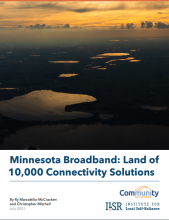Mapping the Future: How Community Networks Are Expanding Broadband - Episode 615 of the Community Broadband Bits Podcast

In this episode of the podcast, Chris and Sean discuss various broadband initiatives and community networks across the United States. The conversation kicks off with updates on California’s Fiber Fund Account and the inclusion of Tribal Communities in broadband projects.
They both highlight the Paul Bunyan Cooperative’s innovative approach to broadband, including Capital Credit distributions to its members and its impact on local communities. They also explore the potential challenges of spending remaining Federal Rescue Plan Funds before key deadlines and the importance of investing in broadband infrastructure.
Finally, the episode delves into Harrison County’s partnership with Etex Communications and the release of ILSR’s updated Community Networks Map, which tracks municipal and cooperative broadband projects nationwide. This episode provides valuable insights into the evolving landscape of community broadband and the exciting possibilities it offers.
This show is 34 minutes long and can be played on this page or via Apple Podcasts or the tool of your choice using this feed.
Transcript below.
We want your feedback and suggestions for the show-please e-mail us or leave a comment below.
Listen to other episodes or view all episodes in our index. See other podcasts from the Institute for Local Self-Reliance.
Thanks to Arne Huseby for the music. The song is Warm Duck Shuffle and is licensed under a Creative Commons Attribution (3.0) license




